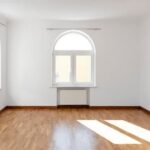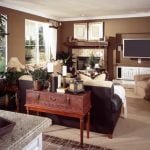British colonial home decor brings a touch of elegance and history to any living space with its timeless charm and classic design elements. Drawing inspiration from the British Empire’s colonial past, this style incorporates a blend of influences from different cultures around the world. From rich textures to earthy tones, British colonial decor exudes warmth and sophistication, creating a cozy yet refined atmosphere in your home.
Originating from the British colonization of countries like India, Africa, and the Caribbean, British colonial style reflects the fusion of traditional British design with local craftsmanship and materials. This unique blend results in a distinctive aesthetic that is both inviting and luxurious. By incorporating pieces from various regions and eras, British colonial home decor adds depth and character to any room.
Key elements of British colonial home decor include natural materials such as dark woods like mahogany or teak, rattan furniture, tropical motifs, and botanical prints. The color palette typically features earthy tones like greens, browns, tans, and blues inspired by nature.
Textiles play a crucial role in this style, with intricate patterns and textures adding interest to furnishings such as cushions, rugs, and curtains. Stay tuned for a deeper dive into the historical origins and key design features that define British colonial home decor.
Historical Origin of British Colonial Style
The British Colonial style of home decor has a rich historical origin that reflects the influence of British settlers on their colonies around the world. During the height of the British Empire in the 18th and 19th centuries, colonizers brought back exotic furnishings and decor from their travels in Asia, Africa, and the Caribbean. This blending of diverse cultural influences gave birth to the unique aesthetic of British Colonial home decor that is still popular today.
Global Inspiration
One of the key aspects of British Colonial style is its eclectic mix of design elements influenced by different parts of the world. From Chinoiserie to Indian motifs, this style incorporates a range of cultural references that are seamlessly integrated into interior design. The use of natural materials such as rattan, bamboo, teak wood, and jute reflects the colonial lifestyle’s connection to nature and exploration.
Colonial Architecture
British Colonial homes were typically designed with large windows and high ceilings to allow for ventilation in tropical climates. Verandas or balconies were common features that provided outdoor living spaces for relaxation in warm weather. Architectural details like louvered shutters, white-washed walls, and wooden floors also contribute to the distinctive charm of British Colonial homes.
Legacy in Modern Decor
Today, the British Colonial style continues to inspire interior designers and homeowners seeking a timeless and sophisticated look for their homes. Elements like dark wood furniture, botanical prints, wicker accents, and neutral color schemes are often used to evoke the ambiance of an elegant colonial residence. By incorporating these design elements with a modern twist, you can create a space that pays homage to the grandeur and romance of British Colonial home decor while still feeling fresh and contemporary.
Key Elements of British Colonial Home Decor
British Colonial home decor is a timeless and elegant style that draws inspiration from the British Empire’s colonial past. Incorporating a blend of traditional British design elements with influences from tropical climates, this decor style exudes warmth, sophistication, and a sense of adventure. To achieve an authentic British Colonial look in your home, it is essential to focus on certain key elements that define this aesthetic.
1. Natural Materials: One of the prominent features of British Colonial home decor is the use of natural materials such as wood, rattan, bamboo, and wicker. These materials add a sense of warmth and texture to the space while also providing a connection to nature. Incorporate furniture pieces like wooden four-poster beds, rattan armchairs, or bamboo side tables to enhance the colonial feel in your home.
2. Neutral Palette with Accents: The color palette in British Colonial decor typically consists of neutral tones such as whites, creams, beiges, and earthy browns. These hues create a soothing backdrop for the space while allowing bold accents in shades of navy blue, hunter green, or deep terracotta to pop. Consider incorporating these accent colors through throw pillows, rugs, or artwork to add depth and visual interest to your decor.
3. Tropical Prints and Patterns: British Colonial style often features tropical prints and patterns inspired by exotic flora and fauna found in colonial territories. Think palm leaves, floral motifs, animal prints, or botanical illustrations on upholstery fabrics, curtains, or accent pieces like cushions or lampshades. These prints inject a sense of adventure and nostalgia into the decor while evoking the atmosphere of far-flung tropical destinations.
Incorporating these key elements into your British Colonial home decor will help you create a sophisticated yet inviting space that pays homage to the grandeur of colonial-era interiors. Whether you live in a modern apartment or a traditional house, adding touches of British colonial aesthetics can elevate your interior design with timeless elegance and global charm.
Color Palette and Textiles in British Colonial Decor
When it comes to British colonial home decor, the color palette plays a crucial role in capturing the essence of this style. Neutral tones such as ivory, beige, cream, and soft whites are commonly used as the base colors in British colonial interiors.
These hues create a sense of calmness and sophistication while allowing other elements to stand out. To add depth and warmth to the space, richer tones like deep greens, blues, and terracotta are often incorporated through accents or textiles.
In terms of textiles, British colonial decor is characterized by the use of natural materials such as cotton, linen, and jute. These fabrics not only provide a sense of comfort but also evoke a rustic charm that is synonymous with colonial living. Traditional patterns like floral prints, paisleys, and stripes are frequently seen in British colonial homes, adding a touch of elegance to the interiors.
Incorporating Textiles
To bring British colonial flair into your home through textiles, consider incorporating throw pillows with intricate patterns or drapes made from light, airy fabrics. Rattan or wicker furniture paired with cushions upholstered in botanical or tropical prints can also enhance the overall aesthetic. Additionally, layering rugs in natural fibers like sisal or seagrass can add texture and interest to the space while staying true to the colonial theme.
Choosing the Right Color Accents
When selecting color accents for your British colonial decor, opt for earthy tones inspired by nature such as muted greens, blues inspired by the ocean, sandy beiges reminiscent of beaches, and sunset oranges or reds. These colors reflect the landscapes encountered by British colonizers during their travels and help to recreate an exotic atmosphere within your home.
By carefully choosing textiles and color palettes that align with this style, you can effortlessly infuse your space with a touch of timeless elegance reminiscent of British colonial heritage.
Furniture and Design Features in British Colonial Homes
British colonial home decor is a style that exudes elegance, sophistication, and a sense of history. When it comes to furniture and design features in British colonial homes, there are several key elements that define this aesthetic. One of the most prominent features of British colonial decor is the use of dark wood furniture, such as mahogany, teak, or rosewood. These rich, sturdy pieces add a sense of warmth and luxury to any room.
In addition to dark wood furniture, British colonial homes often feature pieces with intricate carvings and detailing. Whether it’s a beautifully carved four-poster bed or a handcrafted armoire, these design features add a touch of traditional craftsmanship to the space. Another characteristic of British colonial furniture is its functionality and versatility. Pieces are often multipurpose, serving both practical and decorative purposes in the home.
When it comes to design features in British colonial homes, attention to detail is key. From ornate molding and trim work to elegant window treatments like billowing curtains or plantation shutters, every element is carefully chosen to create a cohesive look. Embracing British colonial decor means paying homage to the past while also infusing your own personal style into the mix.
| Key Features | Description |
|---|---|
| Dark Wood Furniture | Adds warmth and luxury to the space |
| Intricate Carvings | Showcases traditional craftsmanship |
| Functional Versatility | Pieces serve both practical and decorative purposes |
Incorporating Natural Elements and Plants in British Colonial Decor
Incorporating natural elements and plants is a key aspect of British Colonial home decor. The British Colonial style was heavily influenced by the tropical environments of colonies, and thus, greenery played a significant role in the design scheme.
To achieve an authentic British Colonial look in your home, consider adding lush plants such as palms, ferns, or rubber trees. These plants not only add a touch of green to your space but also evoke a sense of the exotic and faraway lands that were characteristic of British Colonial decor.
One way to incorporate natural elements into your British Colonial home decor is through the use of wooden furniture and accessories. Opt for pieces made from dark mahogany, teak, or rattan to bring warmth and earthiness to your space. Additionally, woven baskets, jute rugs, and wicker accents can further enhance the natural feel of your decor. These elements not only contribute to the overall aesthetic but also add texture and depth to the room.
A popular trend in British Colonial home decor is the use of botanical prints and patterns. Consider incorporating floral motifs into your textiles such as curtains, throw pillows, or upholstery to bring a touch of nature indoors.
Adding these botanical elements can help create a cohesive look throughout your space while tying back to the theme of lush landscapes and tropical surroundings. By embracing natural elements and plants in your British Colonial home decor, you can create a tranquil and inviting atmosphere that celebrates both history and nature seamlessly.
| Key Elements | British Colonial Home Decor |
|---|---|
| Natural Elements | Plants such as palms, ferns, or rubber trees are essential for creating an authentic British Colonial look. |
| Wooden Furniture | Dark mahogany, teak, or rattan furniture can bring warmth and earthiness to your space. |
| Botanical Prints | Incorporating floral motifs into textiles like curtains or throw pillows can tie back to lush landscapes typical of British Colonial style. |
How to Achieve a British Colonial Look in Your Home
To achieve a British Colonial look in your home, it is essential to focus on incorporating key elements that are characteristic of this style. One of the most important aspects to consider is furniture choice. Opt for pieces that showcase a mix of British and colonial influences, such as dark wood finishes, rattan accents, and intricate carvings. Furniture with a classic yet worldly feel can truly set the tone for your space.
In addition to furniture, color palette plays a significant role in British Colonial home decor. Neutral tones like beige, cream, and khaki serve as a base while deeper hues such as navy blue, forest green, and rich burgundy are used as accents.
These colors reflect the natural landscapes of tropical colonies, adding warmth and sophistication to the overall aesthetic. Textiles such as linen, cotton, and silk in earthy tones or bold patterns can also enhance the colonial feel of your interior.
Furthermore, don’t forget to incorporate natural elements and plants into your British Colonial home decor. Lush foliage in large planters or woven baskets can bring life to your space while adding a touch of tropical flair. Consider incorporating natural materials like jute rugs, bamboo blinds, or wooden accents for an authentic colonial look. By bringing in elements from nature, you can create a sense of tranquility and luxury reminiscent of British colonial interiors.
Mixing British Colonial Decor With Modern Design Trends
When it comes to interior design, mixing different styles can create a unique and visually appealing aesthetic. Combining British colonial home decor with modern design trends is a popular choice for those looking to add a touch of old-world charm to their contemporary living spaces. By blending these two styles, you can create a harmonious balance between traditional elegance and sleek modernity.
To successfully mix British colonial decor with modern design trends, consider incorporating the following elements:
- Antique Furniture: Integrate vintage British colonial furniture pieces such as mahogany dining tables or rattan chairs into modern settings to add character and depth.
- Neutral Color Palette: Opt for a neutral color scheme with accents of rich earth tones like dark greens and burnt oranges to evoke the warm and inviting feel of British colonial style.
- Mix Textures: Combine natural fibers like jute or sisal rugs with sleek materials such as glass or metal to create a blend of textures that marry both styles seamlessly.
By strategically layering these elements, you can achieve a cohesive look that marries the timeless elegance of British colonial home decor with the clean lines and minimalism of modern design. This fusion of styles allows for a versatile and sophisticated space that feels both classic and contemporary at the same time.
Embracing the juxtaposition of old and new in your home decor can be a rewarding experience, as it allows you to showcase your personal style and creativity. Whether you choose to incorporate small accents or fully commit to blending British colonial decor with modern trends, this approach offers endless possibilities for creating a space that is uniquely yours while paying homage to the historical charm of British colonial design.
DIY Projects and Affordable Ways to Add British Colonial Flair to Your Home
British Colonial home decor is a timeless style that encapsulates the charm and elegance of the British Empire’s influence on interior design. For those looking to add a touch of this sophisticated aesthetic to their own homes, there are plenty of affordable ways to achieve the look without breaking the bank. By incorporating DIY projects and making strategic choices in decor, you can transform your space into a colonial-inspired haven.
One simple way to infuse your home with British Colonial flair is by incorporating natural elements and textures. Wicker baskets, bamboo blinds, and jute rugs are inexpensive options that can instantly evoke the spirit of tropical British colonies. Additionally, botanical prints or landscape paintings can bring the lush greenery of tropical plants into your living space, adding an air of exoticism and adventure.
Another cost-effective way to embrace British Colonial home decor is by upcycling furniture pieces or accessories. Thrift stores or online marketplaces are great places to find vintage pieces that can be easily updated with a fresh coat of paint or new hardware.
Look for pieces with classic colonial details such as rattan accents, cane weaving, or intricate carvings to create an authentic feel in your space. With a little creativity and some elbow grease, you can achieve a high-end colonial look on a budget.
Conclusion and Final Tips for Embracing British Colonial Home Decor
In conclusion, British Colonial home decor is a timeless and elegant style that incorporates elements from the colonial era of British rule in various parts of the world. This design aesthetic exudes a sense of refinement, sophistication, and a touch of exoticism that can effortlessly elevate any living space.
By understanding the historical origins, key elements, color palettes, textiles, furniture styles, and design features associated with British Colonial decor, homeowners can successfully create a warm and inviting ambiance reminiscent of colonial times.
One of the distinctive characteristics of British Colonial home decor is the use of natural elements such as rattan, bamboo, teak wood, and jute. These materials not only add texture and depth to interiors but also create a relaxed and tropical feel within the space.
Incorporating potted plants like palms, ferns, or orchids further enhances the connection to nature in British Colonial design. Additionally, adding global accents like ethnic-inspired textiles, pottery, and art pieces can help in achieving an authentic colonial look.
For those looking to embrace British Colonial home decor in their own living spaces, it is important to strike a balance between traditional elements and modern design trends. Mixing antique colonial furniture with contemporary pieces or incorporating vintage finds from thrift stores can create a visually appealing eclectic style.
Furthermore, engaging in DIY projects or exploring affordable ways to add British Colonial flair through accessories like cushions, rugs, or wall art can be a budget-friendly approach to transforming your home into a sanctuary that reflects the charm and elegance of this classic design style.
Frequently Asked Questions
How to Decorate in a British Colonial Style?
Decorating in a British Colonial style involves incorporating elements such as dark wood furniture, botanical prints, woven accents, and natural materials like rattan and jute. To create this look, consider using light, neutral colors with pops of vibrant hues inspired by nature.
What Is Classic British Colonial Style?
Classic British Colonial style is a blend of traditional British design with influences from former colonies like India, the Caribbean, and Africa. This style typically features rich, dark woods, intricate carvings, leather details, and tropical elements like palm leaves or animal prints. It aims to create an elegant yet exotic space reminiscent of the colonial era.
How Can I Make My House Look Colonial?
To give your house a colonial aesthetic, consider adding architectural details like crown molding or wainscoting. Incorporate dark wood furniture pieces with intricate carvings and leather upholstery for an authentic feel. Decorate with botanical prints or tropical motifs to evoke that classic colonial charm in your home’s interiors.

I’m thrilled to be your companion on this exciting journey through the world of home decor and design. With a passion for turning houses into homes and a keen eye for the finer details, I’m here to help you transform your living spaces into beautiful, functional, and meaningful havens.





